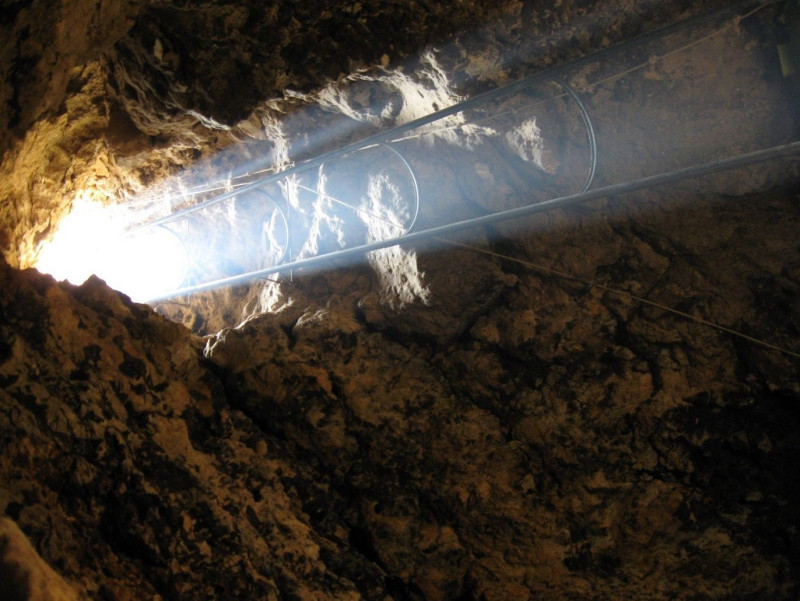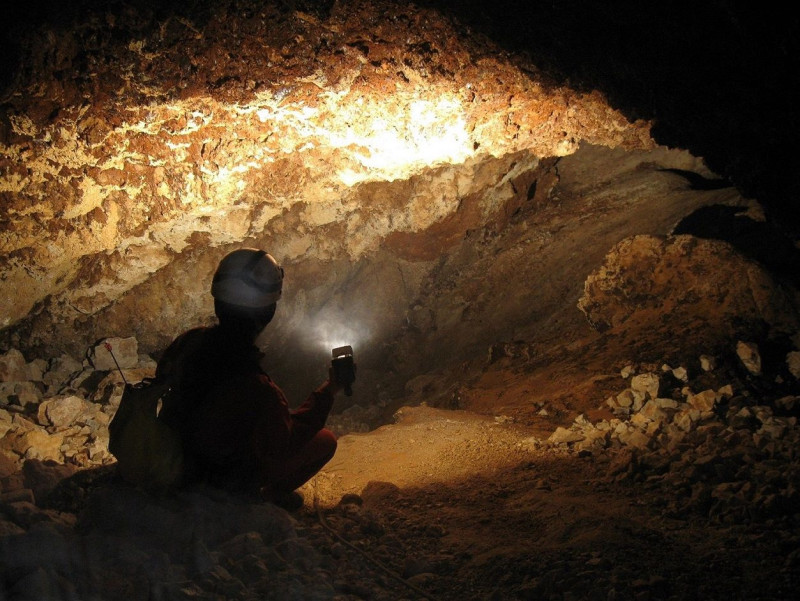The speleogenesis of the Black Rock began a few million years ago and stopped when the cave was found higher than the groundwater, due to geological changes
New information on the biological and geological history of the area of Sidirokastro Serres is evidenced by unknown bacteria that were analyzed in the context of research in the cave of the Black Rock.
The impressive findings are the culmination of a decade of research work by the scientific team of the Department of Geology of AUTH.
What metallic crust reveals at a depth of 56 meters
Exploration in the cave, which is a unique geological structure, reached a depth of 56 meters, revealing a metallic crust with a porous structure instead of the usual stalactites and stalagmites.
This discovery was the reason to study the cave in depth, offering valuable information about its formation and its special metallic crust. The first analyzes revealed that the crust consists of the goitite mineral, i.e. iron hydroxide. The structure of goitite presented significant differences from its usual forms, which led to further investigations.
The investigations revealed that the cave belongs to subgenericformed by hydrothermal fluids that rise to the surface, rather than being formed by rainwater moving toward the area’s water table.
The speleogenesis of the Black Rock began a few million years ago and stopped when the cave was found higher than the groundwater due to geological changes. However, similar processes likely continue to occur deeper.
Shortly before speleogenesis ceased, the metallic crust formed inside the cave. Detailed chemical analyzes and analyzes of genetic material showed that the conditions during the formation of goitite were special, revealing the presence of previously unknown bacteria.
The crust and its particular porous structure, as well as the micro-alterations of the goitite geochemistry, are potential bio-signatures of these unknown bacteria. The study of the Black Rock cave expands the knowledge about the way of creating the subgeneric caves and reveals new information about the biological and geological history of the region.
Publication of the research in an international scientific journal
The results of this research were published in the international scientific journal CATENA and the team plans to continue their research, both in the underwater area of the cave, and in the study of the unknown organisms.
Part of the research was included in the doctoral thesis of Giorgos Lazaridis, supervised by the Professor of the Department of Geology Vassilis Melfos. In collaboration with Dr. Physicist Dimitris Bessa from the European Synchrotron Radiation Facility (ESRF) in Grenoble, an interdisciplinary team was formed to study the cave and the particular deposit of ghaeitite.
The professor of the Department of Geology of the AUTH Lambrini Papadopoulou, the professor of the Geology Department of the EKPA Panagiotis Voudouris, the director of the Department of Botany of the Biology Department of the AUTH, Prof. professor Spyridon Gelis and his associate and candidate Doctor Manthos Panou.
Source: Skai
I have worked as a journalist for over 10 years, and my work has been featured on many different news websites. I am also an author, and my work has been published in several books. I specialize in opinion writing, and I often write about current events and controversial topics. I am a very well-rounded writer, and I have a lot of experience in different areas of journalism. I am a very hard worker, and I am always willing to put in the extra effort to get the job done.












